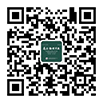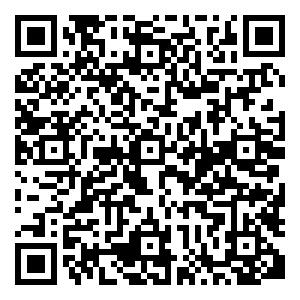Experimental Research and Numerical Simulation of Afterburning Reaction of TNT Explosive by Underwater Explosion
-
摘要: 为了研究TNT炸药的后燃反应,采用水下爆炸实验方法和一种增强炸药后燃反应的实验装置,对TNT炸药的能量输出结构进行了研究,计算得到了不同气体氛围下的后燃反应能量。采用Miller能量释放模型,对后燃反应实验结果进行了数值模拟。结果表明:在实验装置中充入空气或氧气,可明显增强TNT炸药的后燃反应能量输出,实测的后燃反应能量随着氧含量的增加而增大,在实验研究范围内后燃反应能量的最大值达到4.90 kJ/g,但并没有达到后燃反应能量的理论最大值;冲击波压力时程曲线的数值模拟结果与实验结果基本一致,证明了Miller能量释放模型的可行性。Abstract: To explore the afterburning reaction of TNT explosive, the underwater explosion method and an experimental device designed to enhance the afterburning reaction of explosives were used to investigate the energy output structure, and the afterburning reaction energy in different ambient atmosphere was calculated.The experimental data of afterburning reaction was simulated by using Miller energy release model.The results show that the experimental device filled with oxygen or air can increase the afterburning reaction energy output of TNT explosive significantly.The measured afterburning reaction energy increases with the increase of the content of oxygen, and in the studied range, the afterburning reaction energy reaches the maximum value of 4.90 kJ/g, but does not reach the theoretically maximum value.The computed shock wave pressure histories agree with the measured ones well, which indicates that the Miller energy release model is practicable.
-
表 1 水下爆炸平行实验结果
Table 1. Parallel experiment results of the underwater explosion
Experimental No. pm/(MPa) θ/(μs) M/(kPa2·s) tb/(ms) 1 4.65 26.92 804 146.78 2 4.72 26.98 823 147.65 表 2 水下爆炸能量
Table 2. Underwater explosion energy
Filling gas Pressure/(MPa) es/(kJ/g) eb/(kJ/g) et/(kJ/g) Air 0.1 0.19 1.54 1.86 Air 0.6 0.22 2.24 2.66 Air 4.6 0.56 5.09 6.30 N2 0.6 0.21 1.81 2.17 N2 4.6 0.28 3.32 3.87 O2 0.6 0.30 3.27 3.89 O2 4.6 0.68 7.23 8.77 表 3 后燃反应能量
Table 3. Afterburning reaction energy
Filling gas Pressure/(MPa) ea, exp/(kJ/g) ea, theor/(kJ/g) Filling gas Pressure/(MPa) ea, exp/(kJ/g) ea, theor/(kJ/g) Air 0.6 0.49 1.49 O2 0.6 1.72 3.78 Air 4.6 2.43 5.54 O2 4.6 4.90 10.40 -
[1] Ornellas D L. Calorimetric determinations of the heat and products of detonation for explosives: October 1961 to April 1982, UCRL-52821[R]. Livermore, USA: Lawrence Livermore National Laboratory, 1982. [2] Cooper P W. Explosives Engineering[M]. New York, USA: Wiley-VCH, 1996: 132-133. [3] Needham C E. Blast Waves[M]. Heidelberg, Germany: Springer-Verlag, 2010: 303-312. [4] Wolański P, Gut Z, Trzciński W A, et al. Visualization of turbulent combustion of TNT detonation products in a steel vessel[J]. Shock Waves, 2000, 10(2): 127-136. [5] Kuhl A L, Reichenbach H. Combustion effects in confined explosions[J]. Proc Combust Inst, 2009, 32(2): 2291-2298. doi: 10.1016/j.proci.2008.05.001 [6] Kuhl A L, Bell J B, Beckner V E, et al. Gasdynamic model of turbulent combustion in TNT explosions[J]. Proc Combust Inst, 2011, 33(2): 2177-2185. doi: 10.1016/j.proci.2010.07.085 [7] 孙华, 郭志军.高能聚黑类传爆药在水中兵器中应用研究[J].装备指挥技术学院学报, 2010, 21(3): 111-113.Sun H, Guo Z J. Study on the application of high energy hexogen booster in undersea weapons[J]. Journal of the Academy of Equipment Command and Technology, 2010, 21(3): 111-113. (in Chinese) [8] Kiciński W, Trzciński W A. Calorimetry studies of explosion heat of non-ideal explosives[J]. J Therm Anal Calorimetry, 2009, 96(2): 623-630. doi: 10.1007/s10973-008-9100-5 [9] Bjarnholt G, Holmberg R. Explosive expansion waves in underwater detonation[C]//Proceedings of the Sixth International Symposium on Detonation. San Diego, USA, 1976: 540-550. [10] Cole R H. Underwater Explosions[M]. Princeton, USA: Princeton University Press, 1948. [11] 丁长兴, 崔应焆.用最小二乘法求气泡能的固有常数——兼议水下测试炸药能的精确计算[J].爆破器材, 1994(3): 1-7.Ding C X, Cui Y J. Determination of intrinsic constants of bubble energy with least square method: Accurate calculations of explosive energy measured underwater[J]. Explosive Materials, 1994(3): 1-7. (in Chinese) [12] 史锐, 徐更光, 刘德润, 等.炸药爆炸能量的水中测试与分析[J].火炸药学报, 2008, 31(4): 1-5.Shi R, Xu G G, Liu D R, et al. Underwater test and analysis for explosion energy of explosives[J]. Chinese Journal of Explosives & Propellants, 2008, 31(4): 1-5. (in Chinese) [13] 孙锦山, 朱建士.理论爆轰物理[M].北京: 国防工业出版社, 1995: 360-368.Sun J S, Zhu J S. Theory of Detonation Physics[M]. Beijing: National Defense Industry Press, 1995: 360-368. (in Chinese) [14] Lee E L, Horning H C, Kury J W. Adiabatic expansion of high explosive detonation products, UCRL-50422[R]. California, USA: University of California, 1968. [15] Miller P J. A reactive flow model with coupled reaction kinetics for detonation and combustion in non-ideal explosives[J]. MRS Proc, 1996, 418: 413-420. [16] 辛春亮, 徐更光, 刘科种, 等.含铝炸药Miller能量释放模型的应用[J].含能材料, 2008, 16(4): 436-440.Xin C L, Xu G G, Liu K Z, et al. Application of Miller energy release model for aluminized explosive[J]. Chinese Journal of Energetic Materials, 2008, 16(4): 436-440. (in Chinese) -







 下载:
下载:






